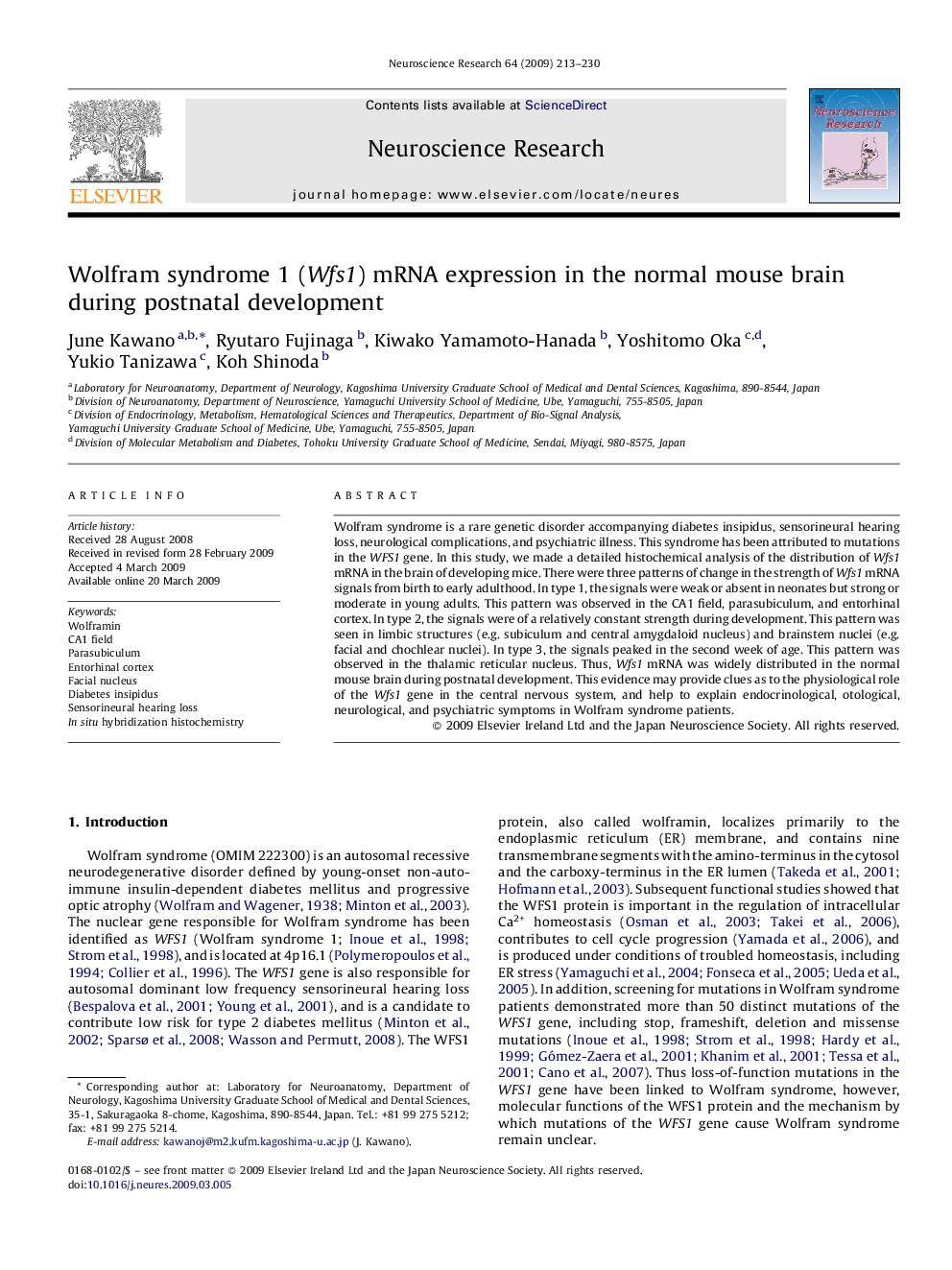| Article ID | Journal | Published Year | Pages | File Type |
|---|---|---|---|---|
| 4352961 | Neuroscience Research | 2009 | 18 Pages |
Wolfram syndrome is a rare genetic disorder accompanying diabetes insipidus, sensorineural hearing loss, neurological complications, and psychiatric illness. This syndrome has been attributed to mutations in the WFS1 gene. In this study, we made a detailed histochemical analysis of the distribution of Wfs1 mRNA in the brain of developing mice. There were three patterns of change in the strength of Wfs1 mRNA signals from birth to early adulthood. In type 1, the signals were weak or absent in neonates but strong or moderate in young adults. This pattern was observed in the CA1 field, parasubiculum, and entorhinal cortex. In type 2, the signals were of a relatively constant strength during development. This pattern was seen in limbic structures (e.g. subiculum and central amygdaloid nucleus) and brainstem nuclei (e.g. facial and chochlear nuclei). In type 3, the signals peaked in the second week of age. This pattern was observed in the thalamic reticular nucleus. Thus, Wfs1 mRNA was widely distributed in the normal mouse brain during postnatal development. This evidence may provide clues as to the physiological role of the Wfs1 gene in the central nervous system, and help to explain endocrinological, otological, neurological, and psychiatric symptoms in Wolfram syndrome patients.
